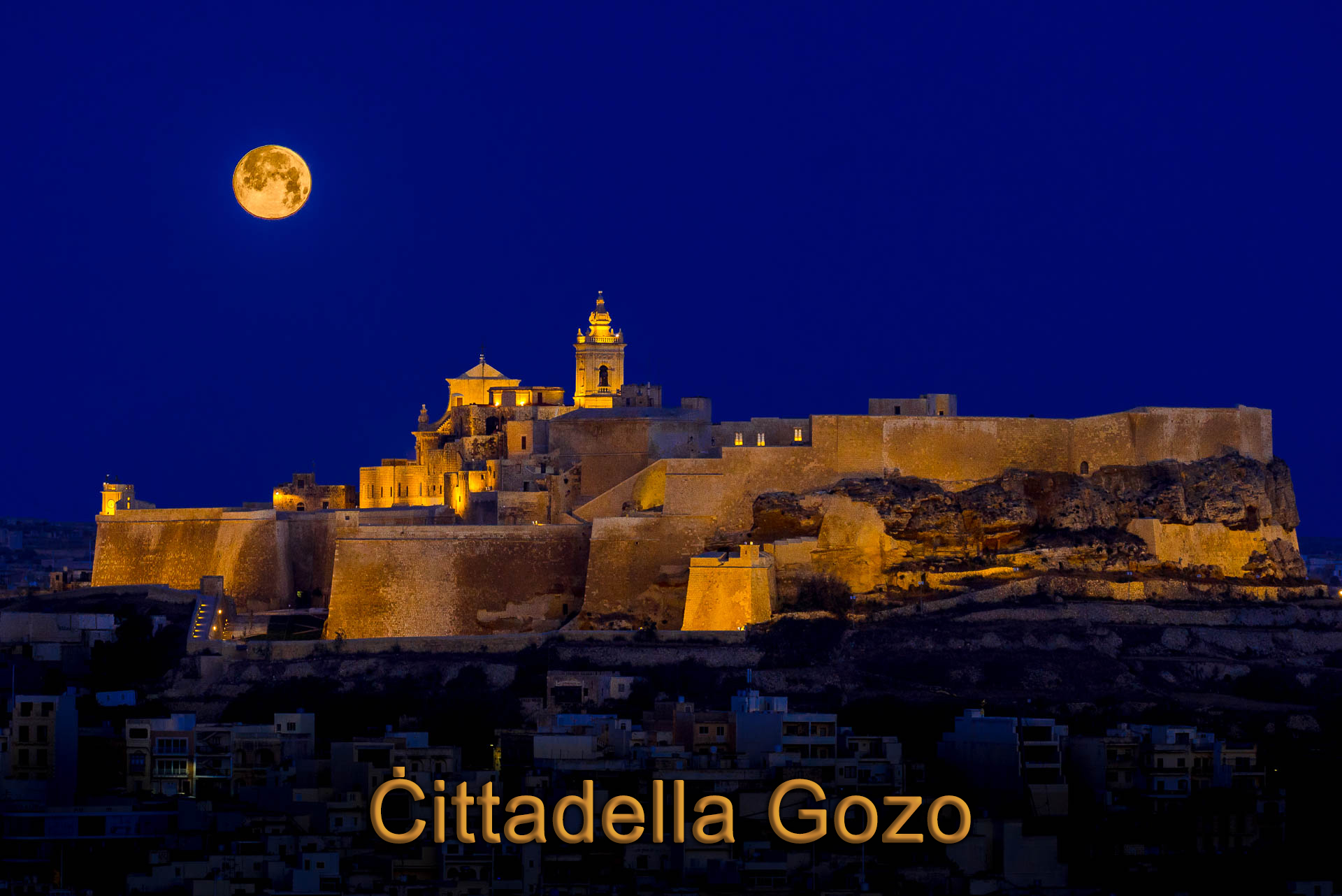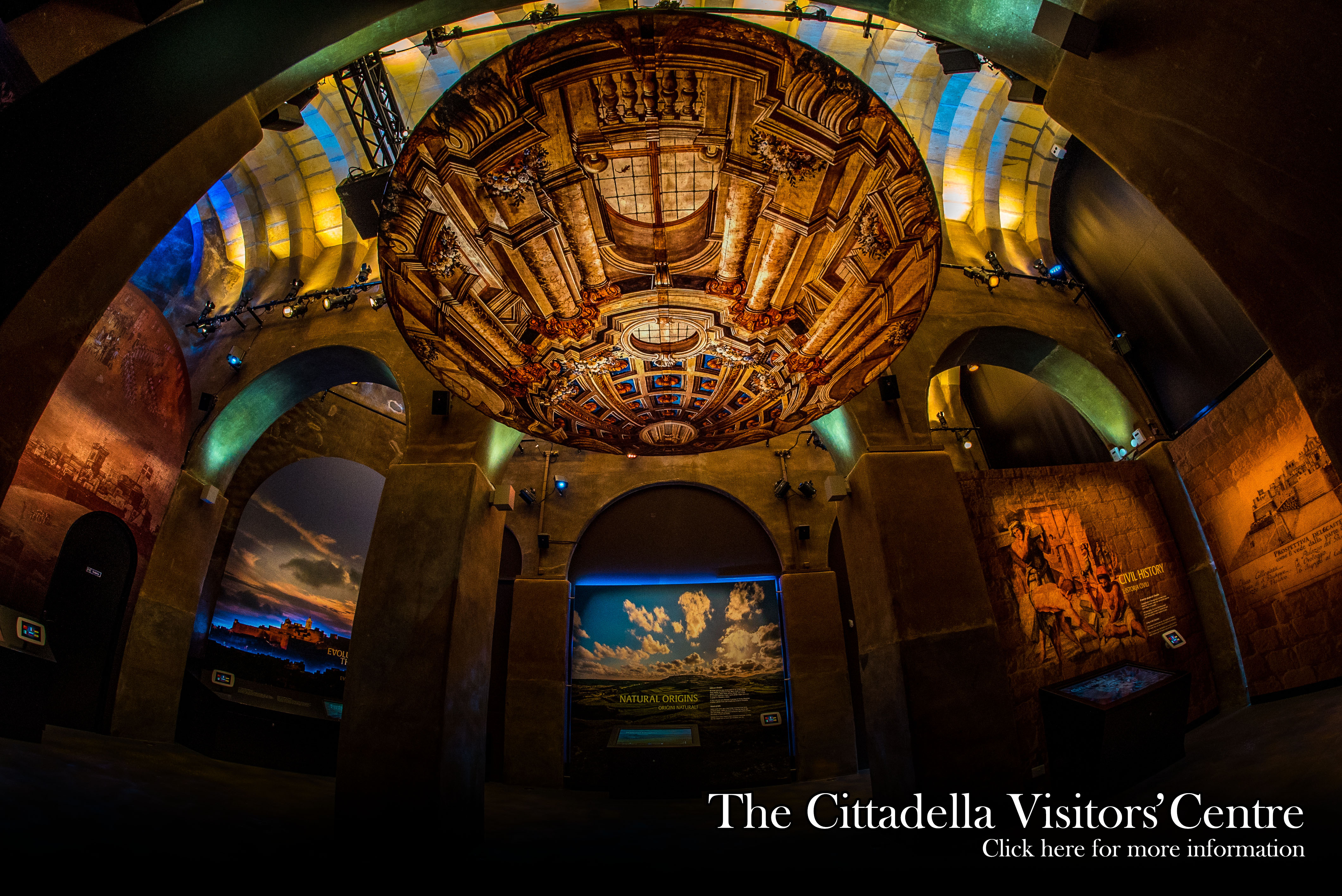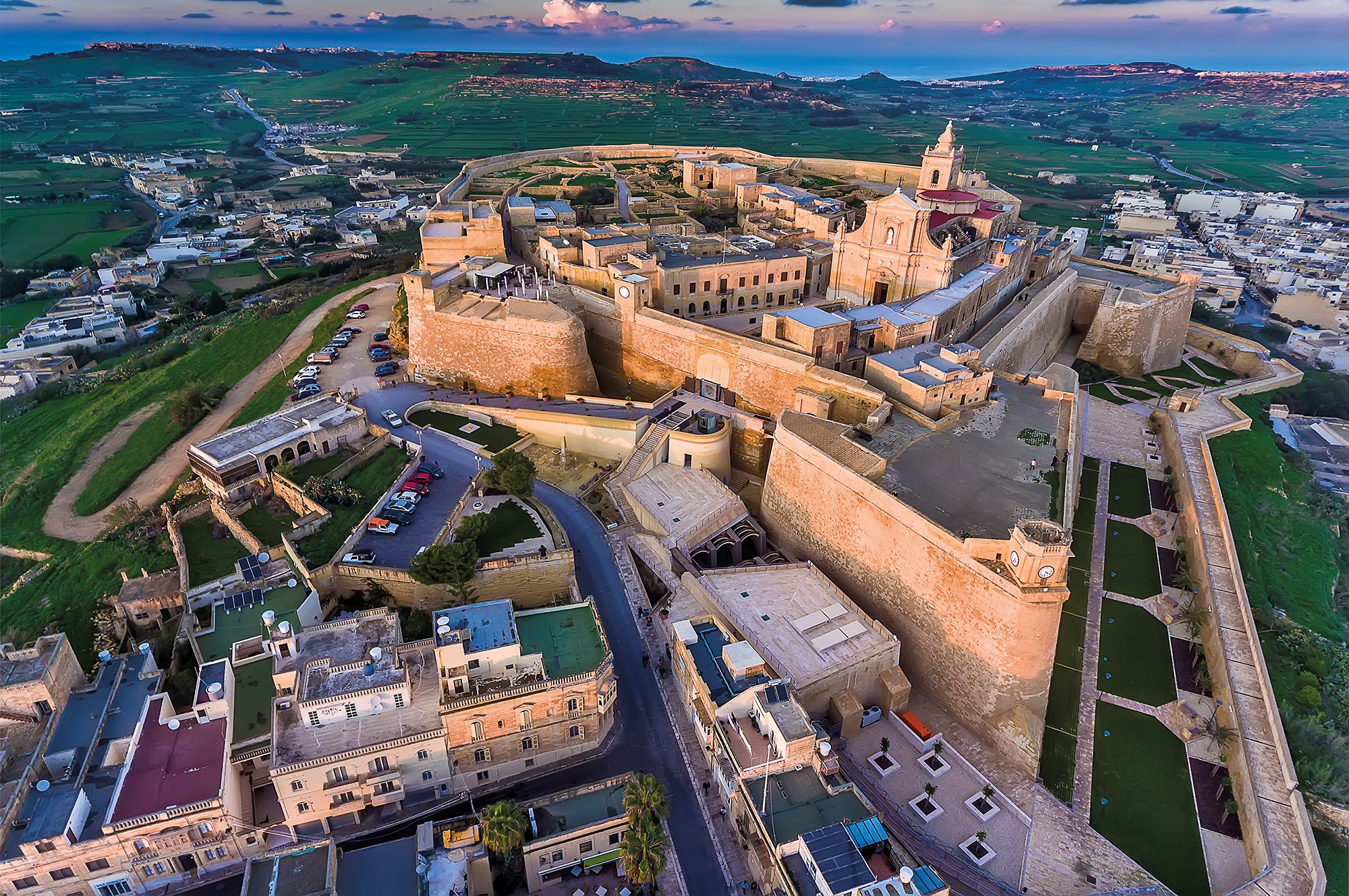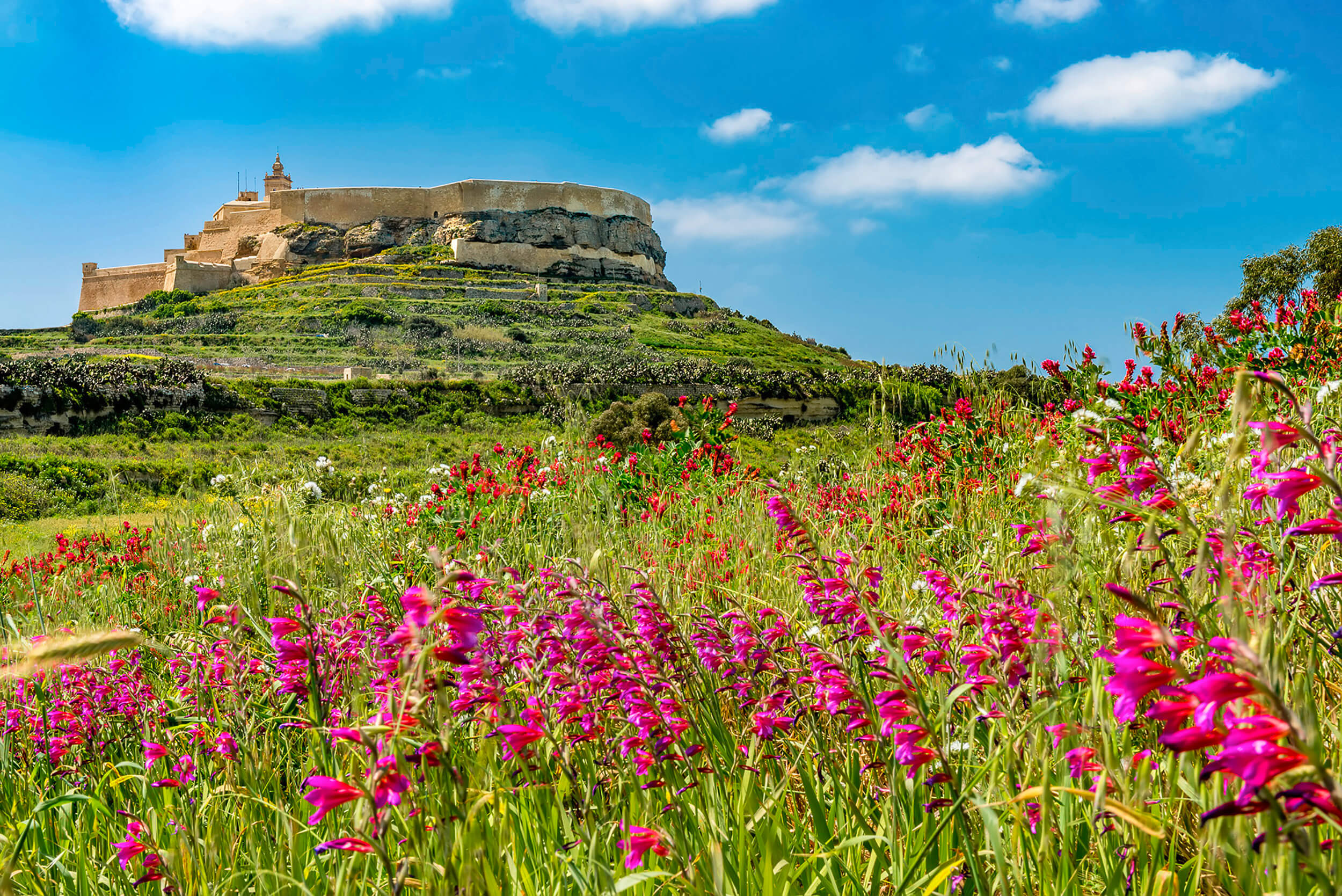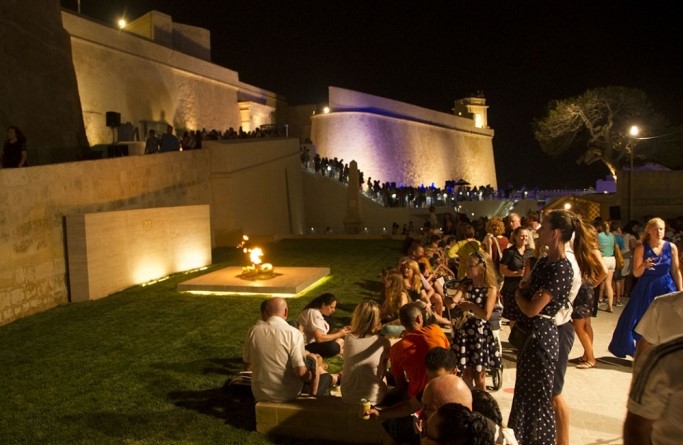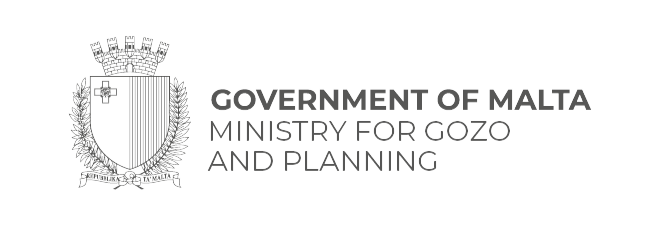The Citadel today
Before you have fully passed under the archway into the Citadel, you will be welcomed by the majestic sight of Gozo Cathedral, across the small square at the top of a wide flight of steps.
A walk along the fortified ramparts is rewarded with a breathtaking 360-degree panorama of Gozo’s hills and valleys, villages and churches and a view right across the sea to Malta.
Only a couple of families live within the Citadel walls today. In the square you will find the magnificent baroque Cathedral of Gozo dedicated to Santa Marija, or more precisely the Assumption of the Virgin Mary; as well as the Law Courts and the Bishop’s Palace.
Very close by are several fascinating small museums and a state of the art Visitors’ Centre: The Cathedral Museum, the Museum of Archaeology, the Folklore Museum, the Gozo Nature Museum, the Old Prison, the Old Gunpowder Magazine, the Grain Silos, the Battery and the World War II Shelter.
Along the winding streets you will find the historic Chapel of St. Joseph and a number of holy niches (shrines) and bass reliefs. Look out too for well-preserved Norman-style windows and arches. On the façade of historic houses and church buildings can be seen Coat-of-Arms, and it is worth noting that whilst some of the damage is due to the toll of time, some is the deliberate work of Napoleon’s troops who briefly occupied the island at the end of the eighteenth century.
Accessible for persons with a disability.
The Gozo Citadel restoration project was recently chosen as a finalist in the European RegioStars awards – Click Here to Vote for the Gozo Citadel
A Journey into History
The Cittadella Project
Over the last few years the Cittadella of Gozo has undergone a major revamp through two restoration and rehabilitation projects co-financed by the European Regional Development Fund (ERDF) under Operational Programme I of the Cohesion Policy 2007 – 2013 of the European Union. Both projects had the objective of consolidating, through restoration, this magnificent fortified town.
One of the projects ERDF 039 centred around the consolidation and stabilisation of the rock outcrops beneath the fortifications and the restoration of the one kilometre of fortification walls forming the Cittadella.
The other project ERDF 246 managed by the Ministry for Gozo, implemented a number of key actions proposed by the Master Plan for the Cittadella. This project included the rehabilitation and conversion of two unused water reservoirs into a visitors’ centre, the restoration of facades of historic buildings, the rehabilitation of the ditch, the reconstruction of the paths, squares and streets within and leading to the Cittadella, the introduction of stair lifts and lifting platforms to increase accessibility, the installation of an energy efficient lighting system both on the outside and the inside of the Cittadella and the conversion of the present Folklore Museum into a Period House.
Both projects have strived to give a new life to the Cittadella, while preserving and highlighting the characteristics of this unique site.
A brief history
The Old Citadel (also called the Citadella or Kastell) rises dramatically above ir-Rabat. Built at a perfect strategic vantage point, it defiantly dominates the skyline exactly as intended by the military architects who built it. A visit to the Citadel should not be missed. The Citadel has been at the centre of activity on the island since possibly Neolithic times, and was certainly fortified during the Bronze Age around 1500 BC. It was later developed by the Phoenicians and in Roman times, it was a complex Acropolis. Gozo was a privileged Roman Municipality, independent of Malta and the Citadel was the centre of its administrative as well as its military and religious life, an important temple to the goddess Juno stood where the Cathedral now stands. The north side of the Citadel dates back to the period of the Aragonese, while the south flank, overlooking Ir-Rabat (Victoria), was re-constructed under the Knights of St. John between 1599 and 1603. This rebuilding came towards the end of Gozo’s darkest period, when for two centuries, marauding Turks and Berber corsairs had harassed and pillaged the Maltese Islands. For this reason, until 1637, the entire population of Gozo was required by law to spend the night within the Citadel for their own safety. The climax of the Turkish raids on Gozo came in 1551. A strong Ottoman naval force, after an unsuccessful attack on Malta, turned its attention to the less well protected Gozo. After a short siege the crumbling medieval walls of the Citadel were overwhelmed and the defenders begged for an honourable capitulation. Tragically for the population, (then numbering around 5000), the surrender terms were far from honourable. With the exception of just 40 elderly and disabled citizens, the entire population of Gozo was chained and taken into slavery. It took nearly 50 years to re-populate the island and rebuild the Citadel in its present layout.
OPEN IN GOOGLEMAPS



